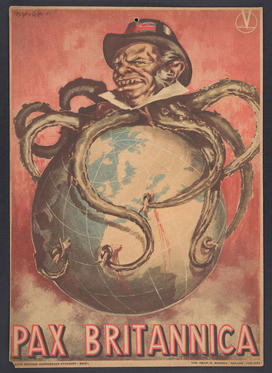In Short: ‘Monsters and Machines,’ PPPL Leadership, Accessibility Guide

“Monsters and Machines,” an exhibit featuring animal and machine motifs used as satire and commentary throughout history is on display at the Milberg Gallery in Firestone Library through Dec. 8. Curated by one former and three current Princeton librarians, the exhibit fuses iconographic sources and traditions to show how propagandists and satirists have used hostile expressions of animals and machines in posters, periodicals, and even postcards going all the way back to Dante Alighieri’s Inferno.
The curators intended to highlight “a seemingly universal impulse to dehumanize adversaries by excluding them from an implied human dignity shared by the artist and the intended viewer,” according to the Princeton University Library. For example, pigs tend to represent imperialist industrialists, and bugs and octopi — or many-legged menaces — signify leaders and countries spreading beyond their borders. Most of the works on display originate from the period between World War I and the end of the Cold War and come from Princeton’s own collections.
Astrophysics professor David McComas left his administrative role as vice president for the Princeton Plasma Physics Laboratory (PPPL) to focus on the 2025 launch of NASA’s Interstellar Mapping and Acceleration Probe (IMAP). McComas is the principal investigator for the IMAP team, which includes 25 partner institutions. Dean for Research Peter Schiffer succeeded McComas as vice president for PPPL in September and will continue in his deanship. Schiffer, a condensed matter physicist, joined Princeton’s faculty in 2023.
Princeton has published a digital guide to accessibility for more than 200 campus buildings, providing information about entrances, elevators, and restrooms, as well as details to assist in navigating classrooms, auditoriums, and other public spaces. “The information in the guides empowers those with disabilities to make decisions about how they can access the space,” said Michael Barnes, the facilities department’s director of accessibility, in a University release. The guide is online at accessableusa.com/princeton-university and available in the Princeton Campus Map apps for iOS or Android.











No responses yet